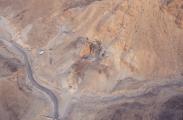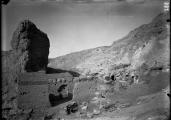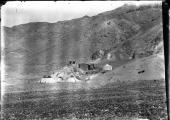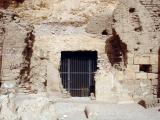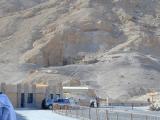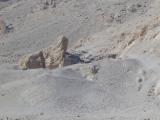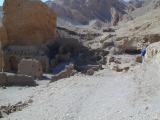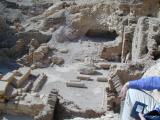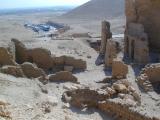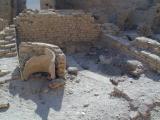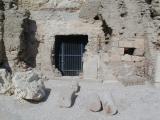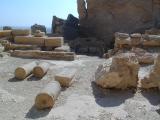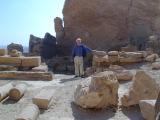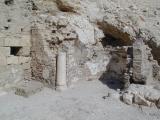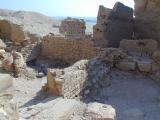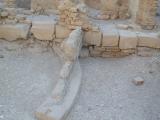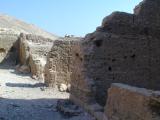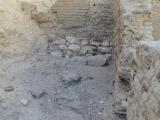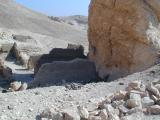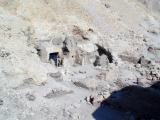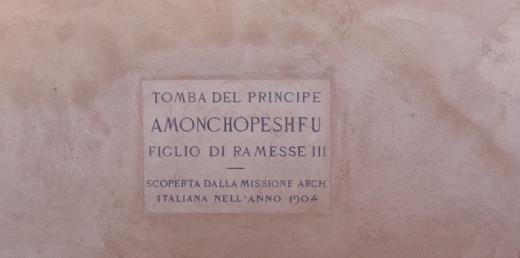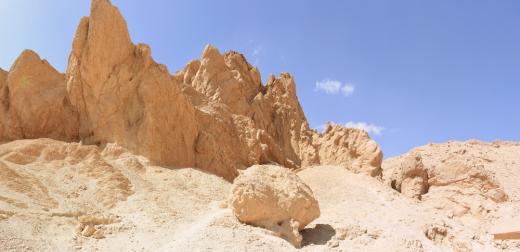QV 95
Anonymous*
About
About
QV 95 is located northeast of the main Wadi, behind Dayr al-Rumi. It is an unfinished tomb with a single long rectangular chamber and a deep side niche to the east, the end of which partially connects with the exterior. A shallower but wider niche was cut into the west wall and other smaller niches were cut towards the rear of the chamber. On the west wall of one of the side niches are very localized remains of wall plaster that appear to be made of earth and straw. This plaster is referred to as mouna in descriptions of adjacent parts of the Dayr al-Rumi site and is associated with the Coptic use of the Queens Valley. The presence of the plaster within the tomb has not been described in written sources and presumably dates from re-use of the tomb when the area in front of the tomb entrance was the site of a Coptic church and monastery.
The tomb was recorded by the Italian mission in 1906 and most recently cleared by the Franco-Egyptian team in 1988. According to Guy Lecuyot, the tomb was probably unfinished and belongs to the 20th Dynasty. Furthermore, it probably originally had four niches on each side of the rectangular chamber. QV 95 was later reused when the area in front of the tomb was changed into a sanctuary during the reign of the Roman emperor Antoninus Pius (138-161 A.D.), and then into a Coptic monastery. The tomb is currently not open to the public and is closed by a metal grill door. It is used as storage for artefacts from the monastery.
Site History
The tomb was constructed in the 20th Dynasty and left unfinished. It was later reused in the Roman Period, reign of the Roman emperor Antoninus Pius (138-161 A.D.), when a small sanctuary was constructed in front of the tomb. The niches now present in QV 95 were excavated at this point to accommodate figurines. The tomb was reused once again during the Coptic Period as a meditation space.
Dating
This site was used during the following period(s):
Exploration
Conservation
Site Condition
According to the GCI-SCA, the highly fractured and heavily jointed rock present areas of localized loss in the walls and ceiling, particularly on the east side of the chamber at the corner of the niche to the east. There is a wide vertical crack running through the east and west walls of the chamber, but wall plaster remains are located over it on the west wall, so it appears to be stable. The rock surrounding the tomb door presents areas of loss in the lower half on the east side, and is highly fractured on the west side. Salt efflorescence is present on rock surfaces and along fractures of the bedrock, and are also potential sources of rock damage in the future if exposed to water. The small fragments of wall plaster in the west niche present areas of detachment, particularly along the edges. There is evidence of insect (wasp) and bird nesting. There are signs of flood debris on the floor. The walls and ceiling are covered with black deposits presumably due to fires, and urine deposits are found on the rock ceiling and wall surfaces as well, due to the prior habitation by bats. Highly fractured rock and areas of loss in the tomb are due largely to the inherent clay-rich qualities of the rock, and the paucity of the wall plaster remains is due to its fragile nature and possibly the reuse of the tomb, including present use for storage, although it is not known what the plaster's original extent was within the tomb.
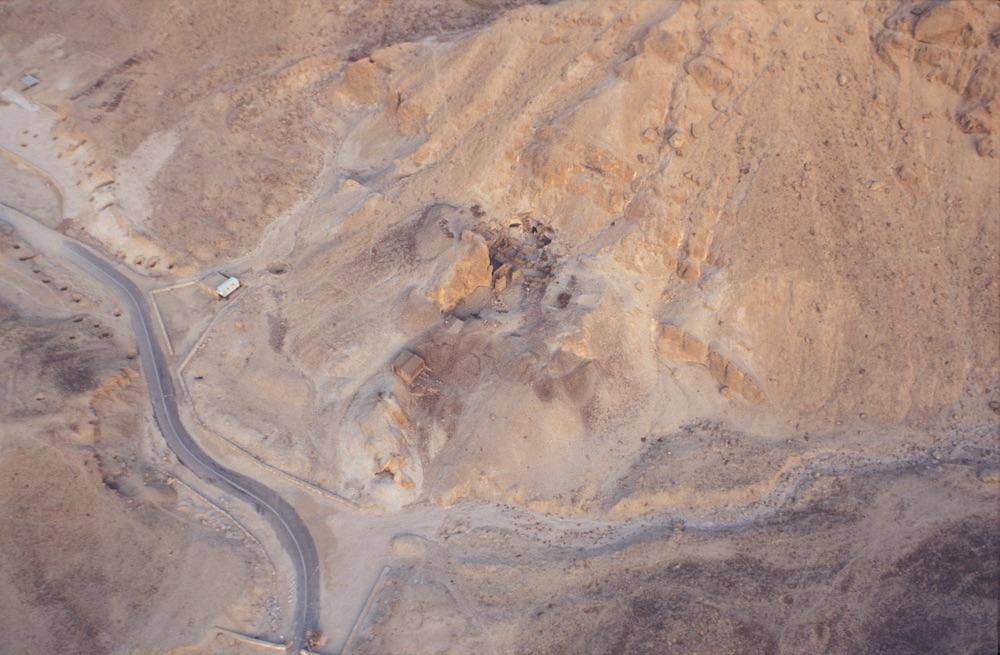
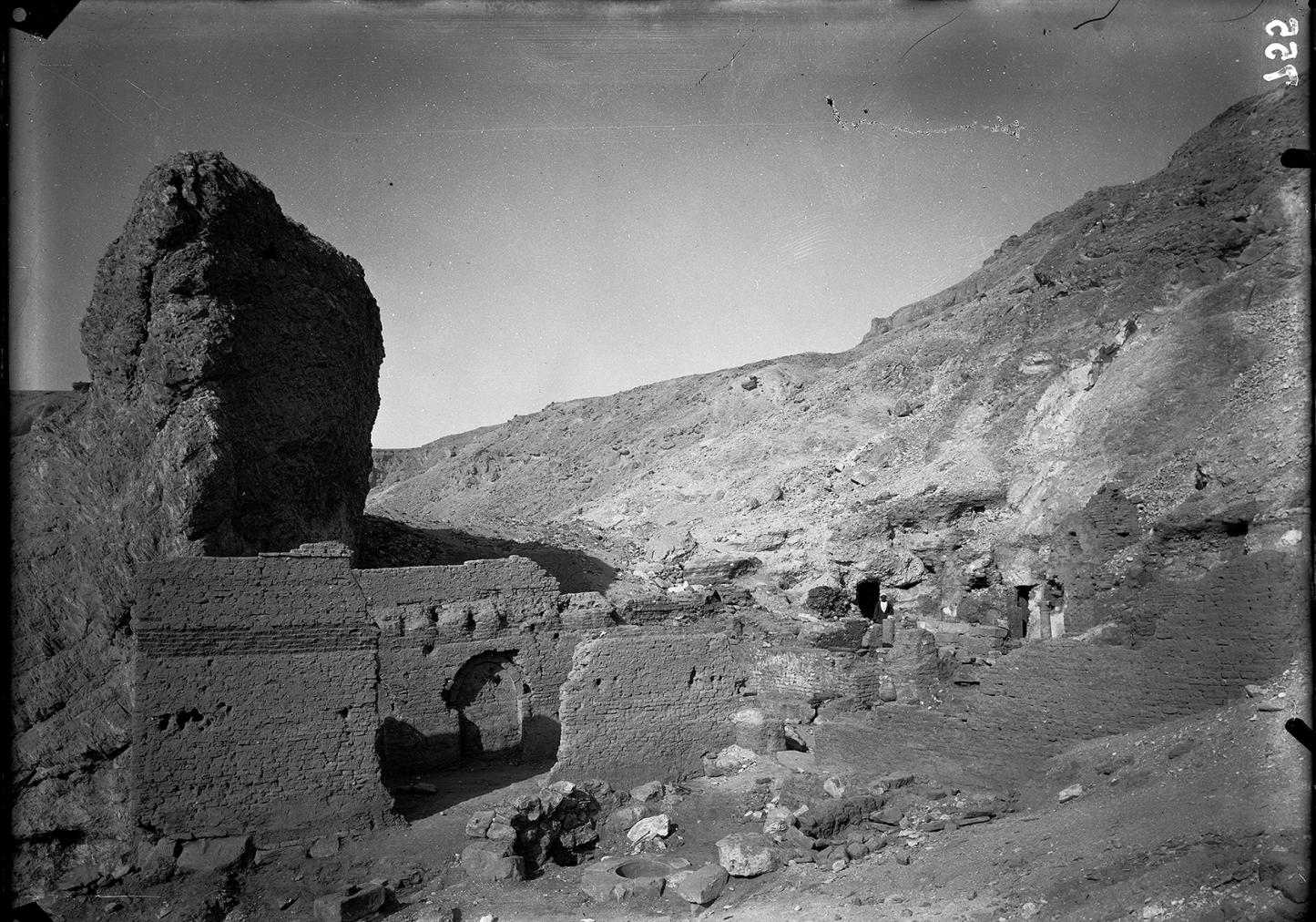
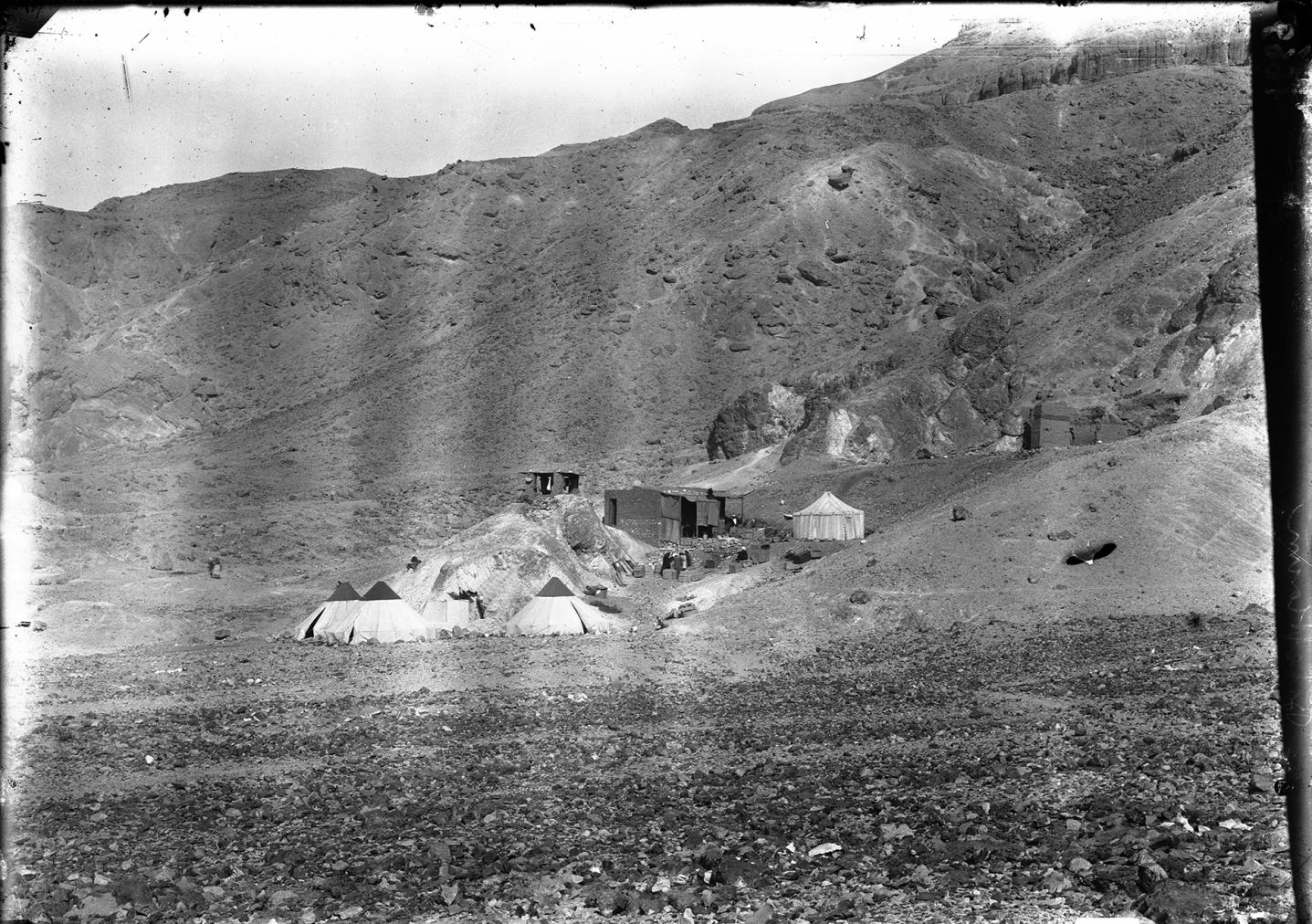
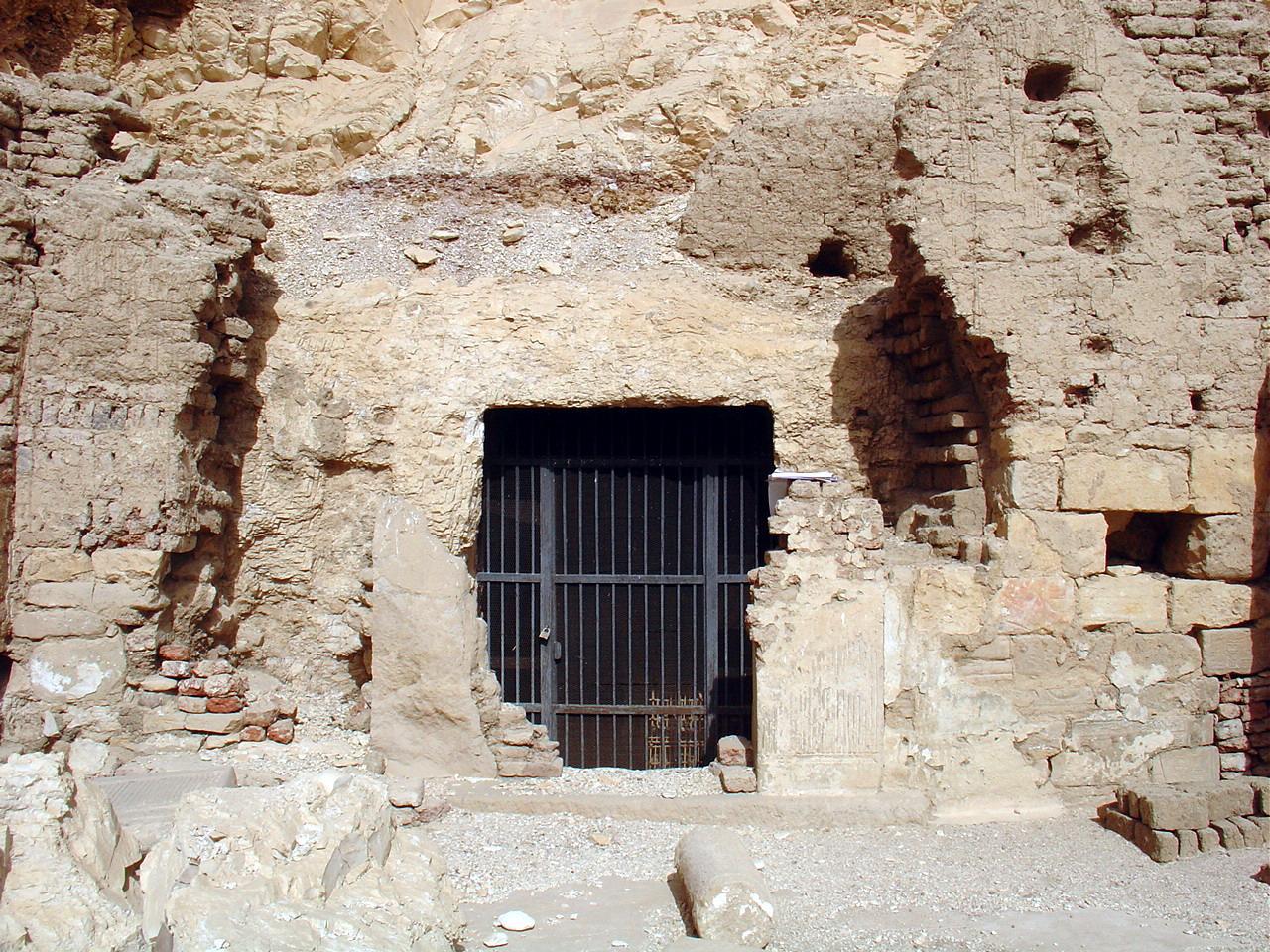
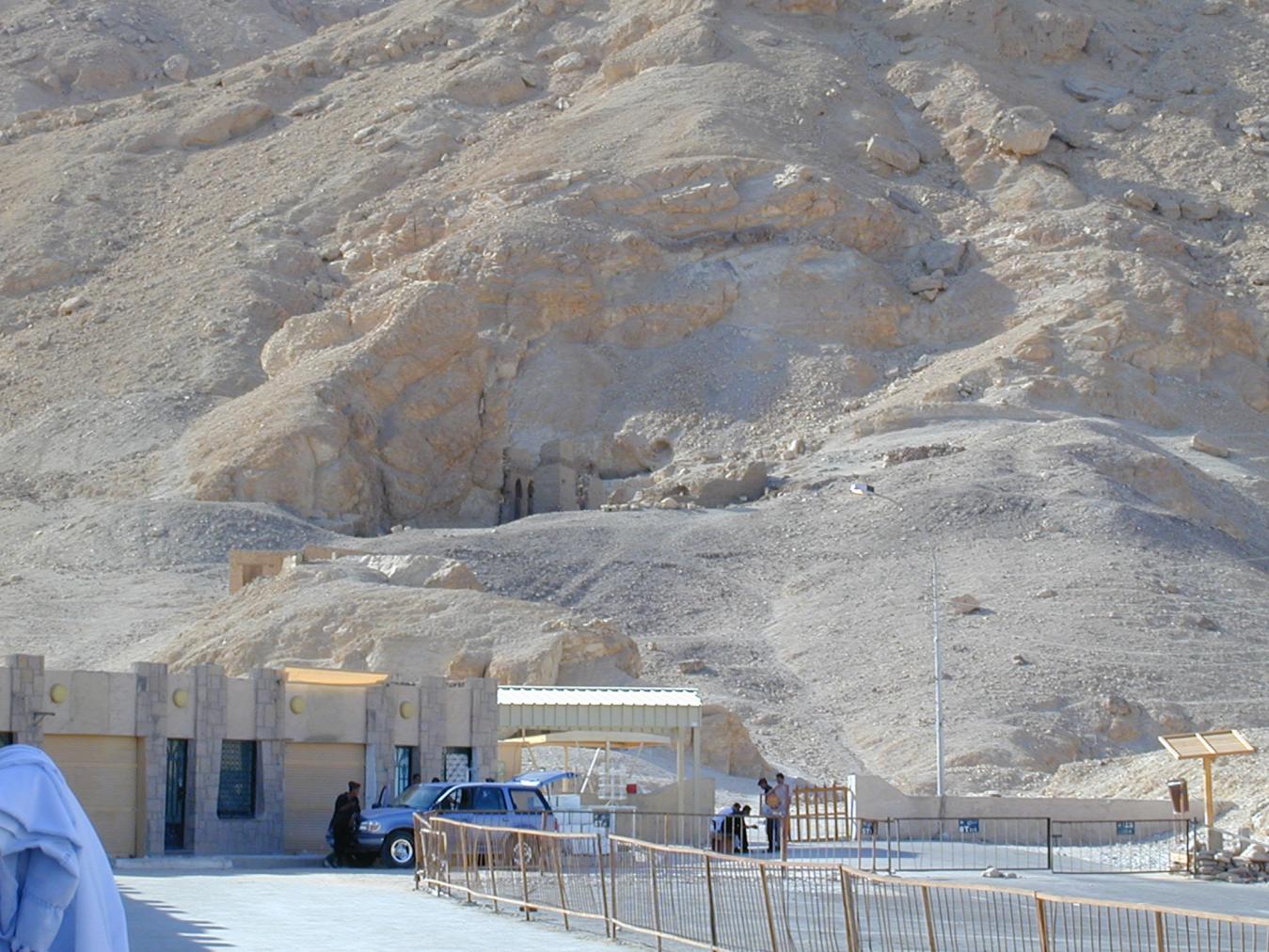
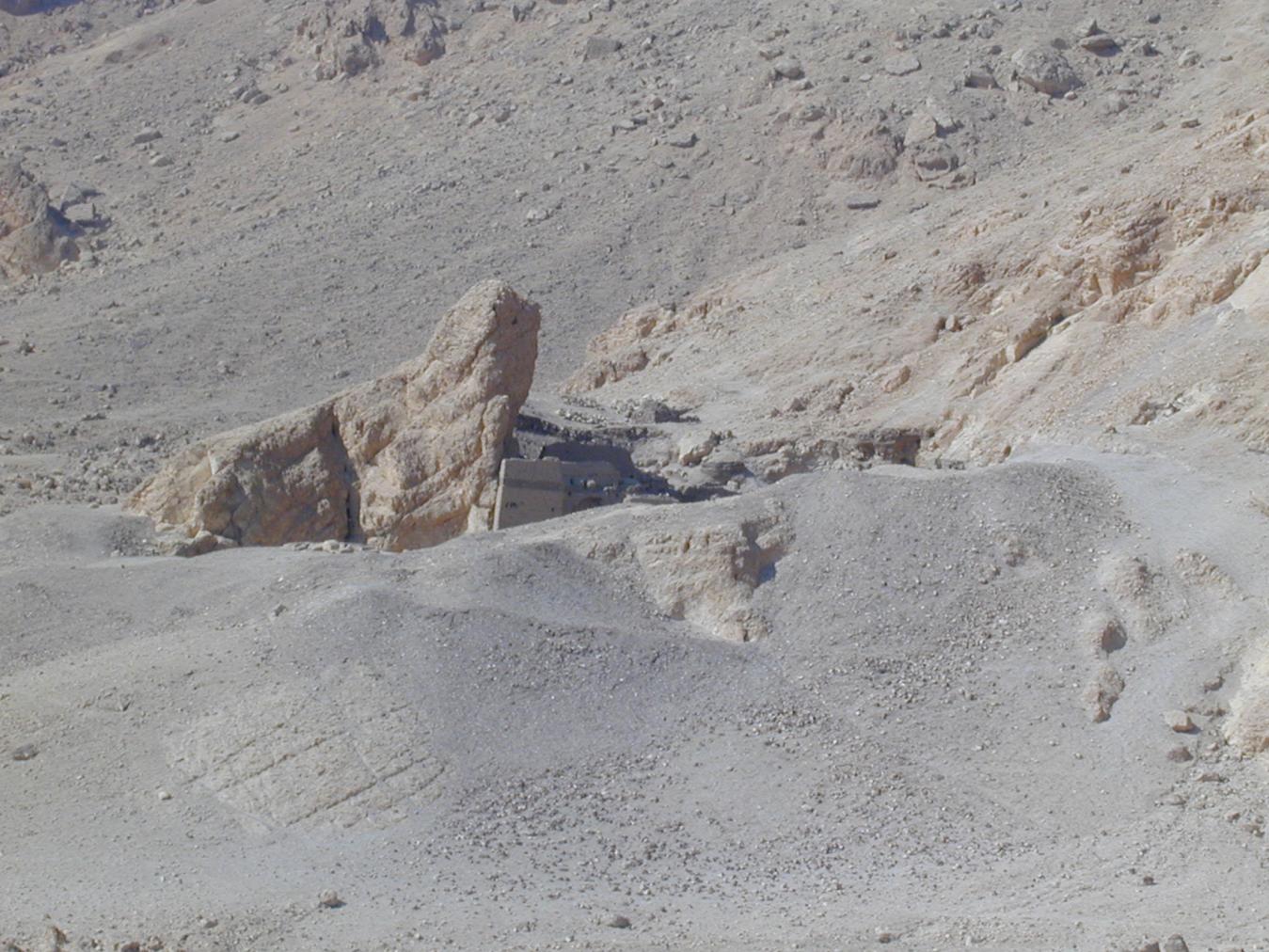
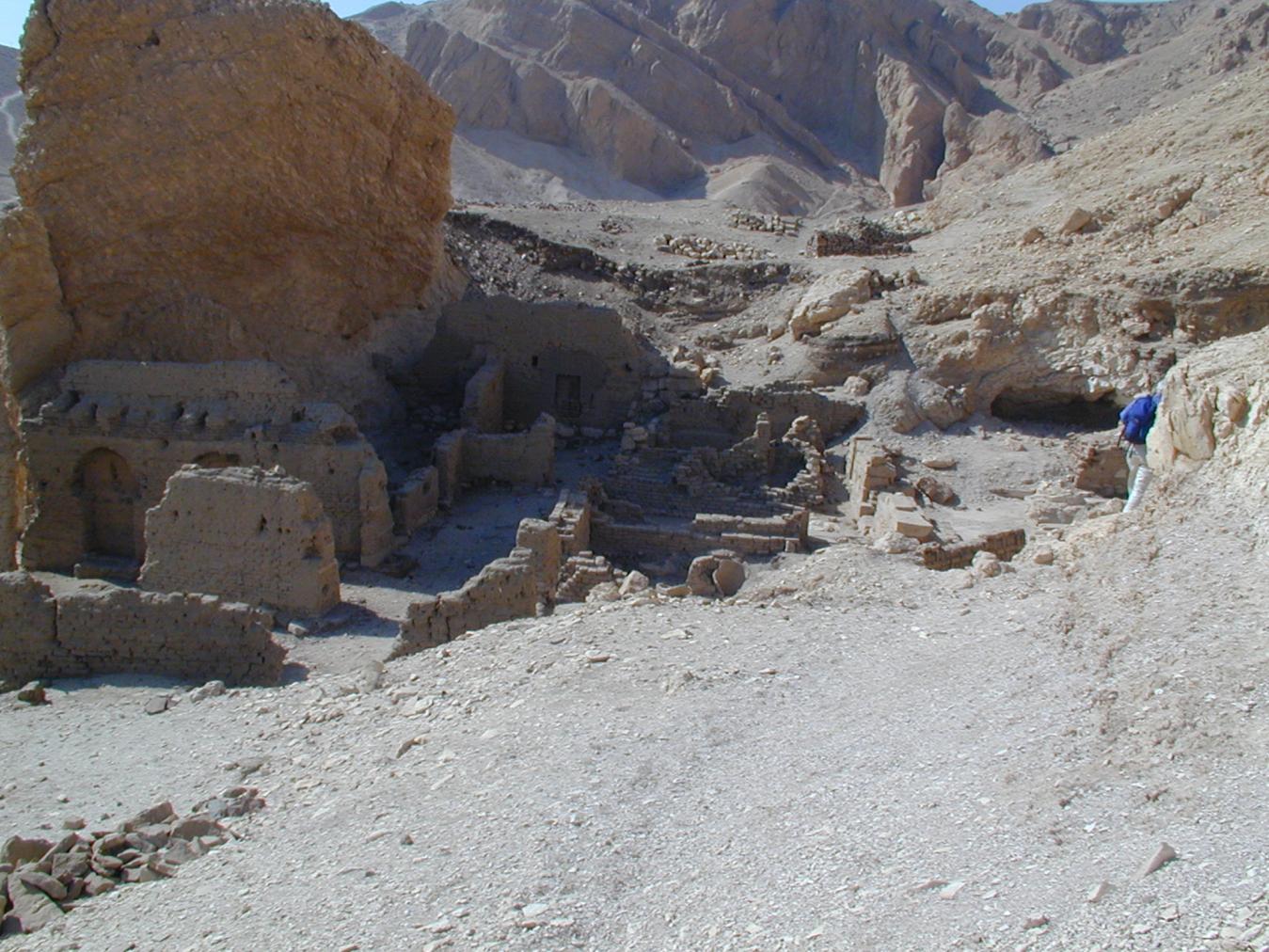
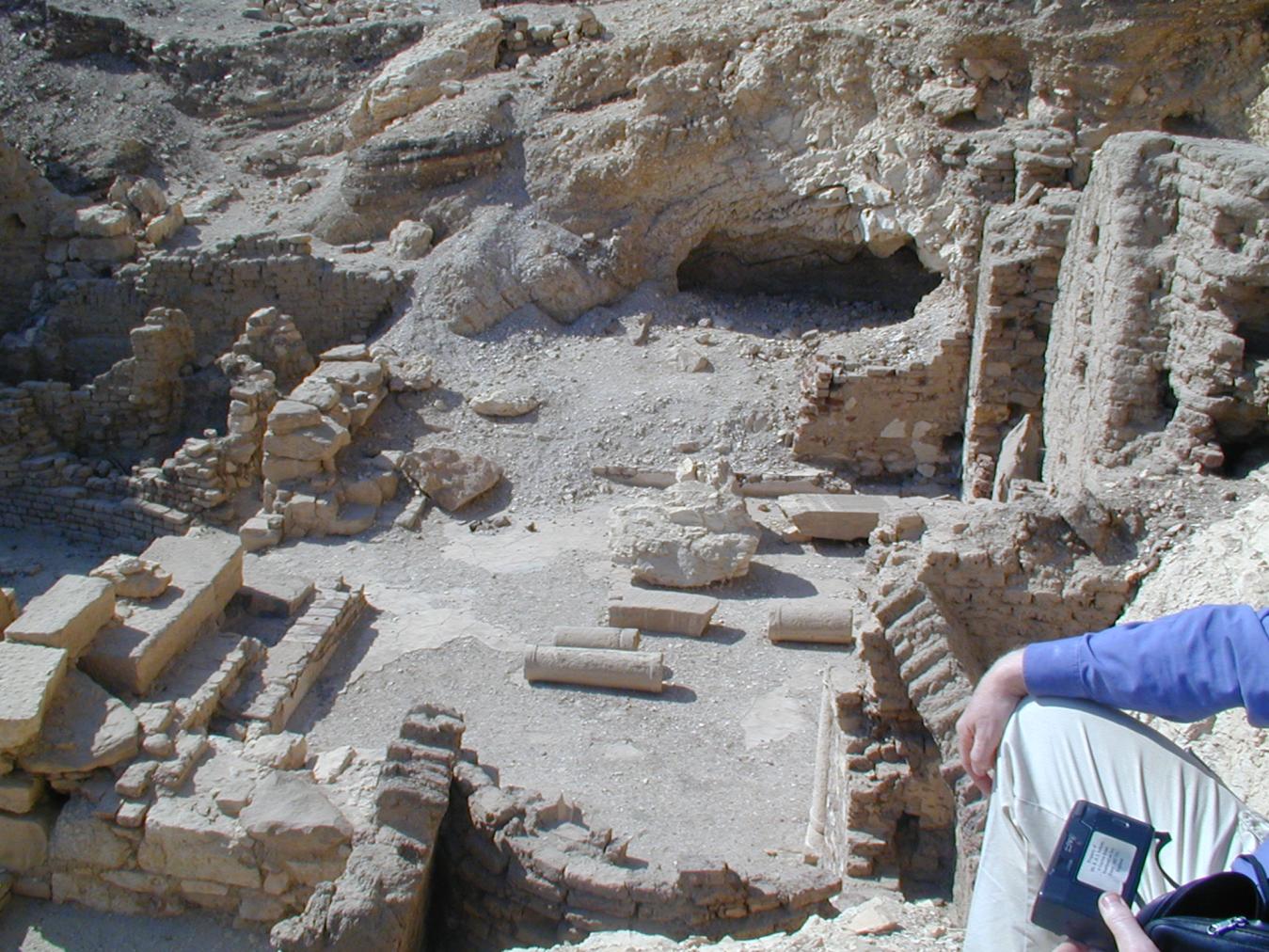
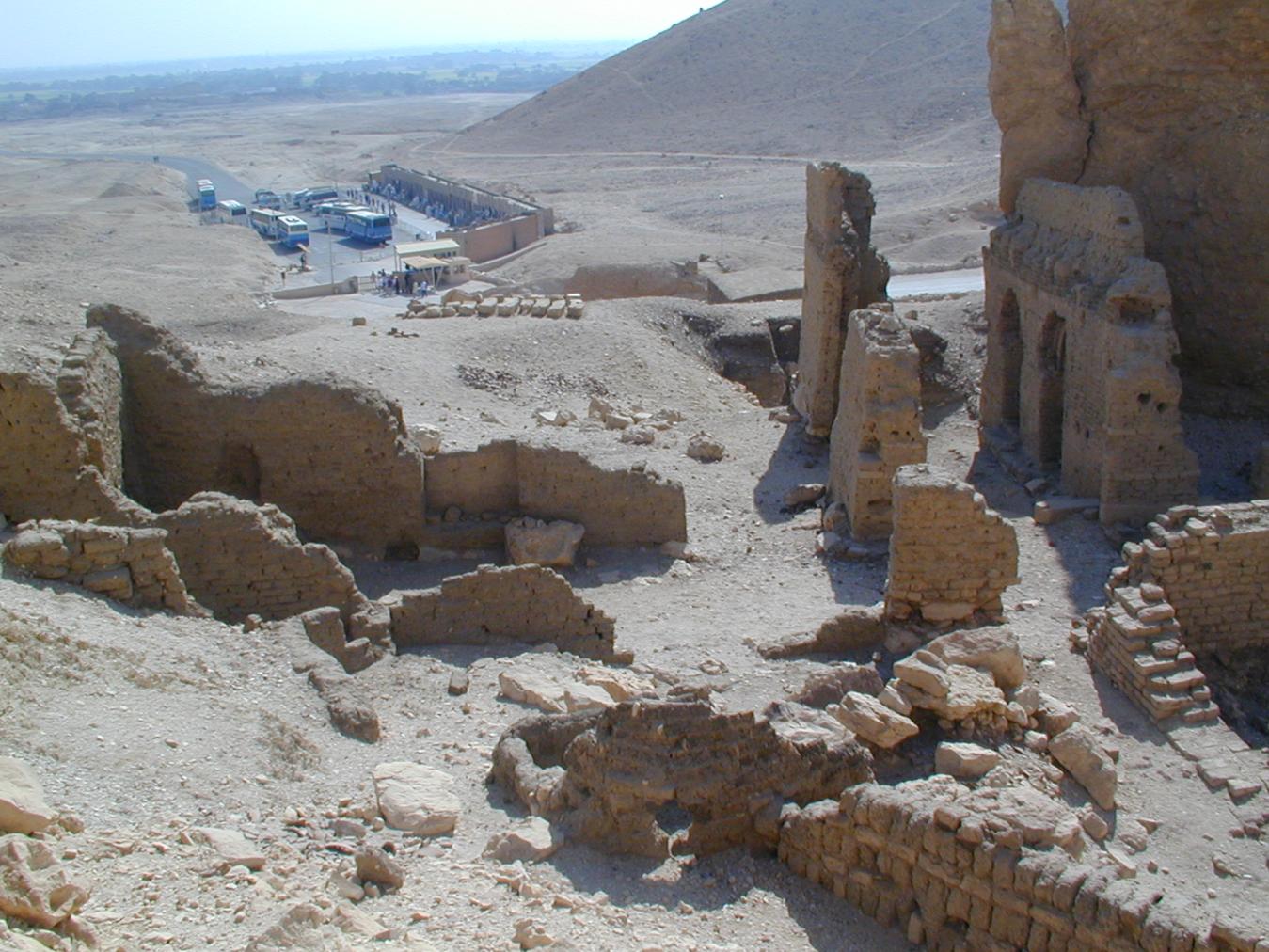
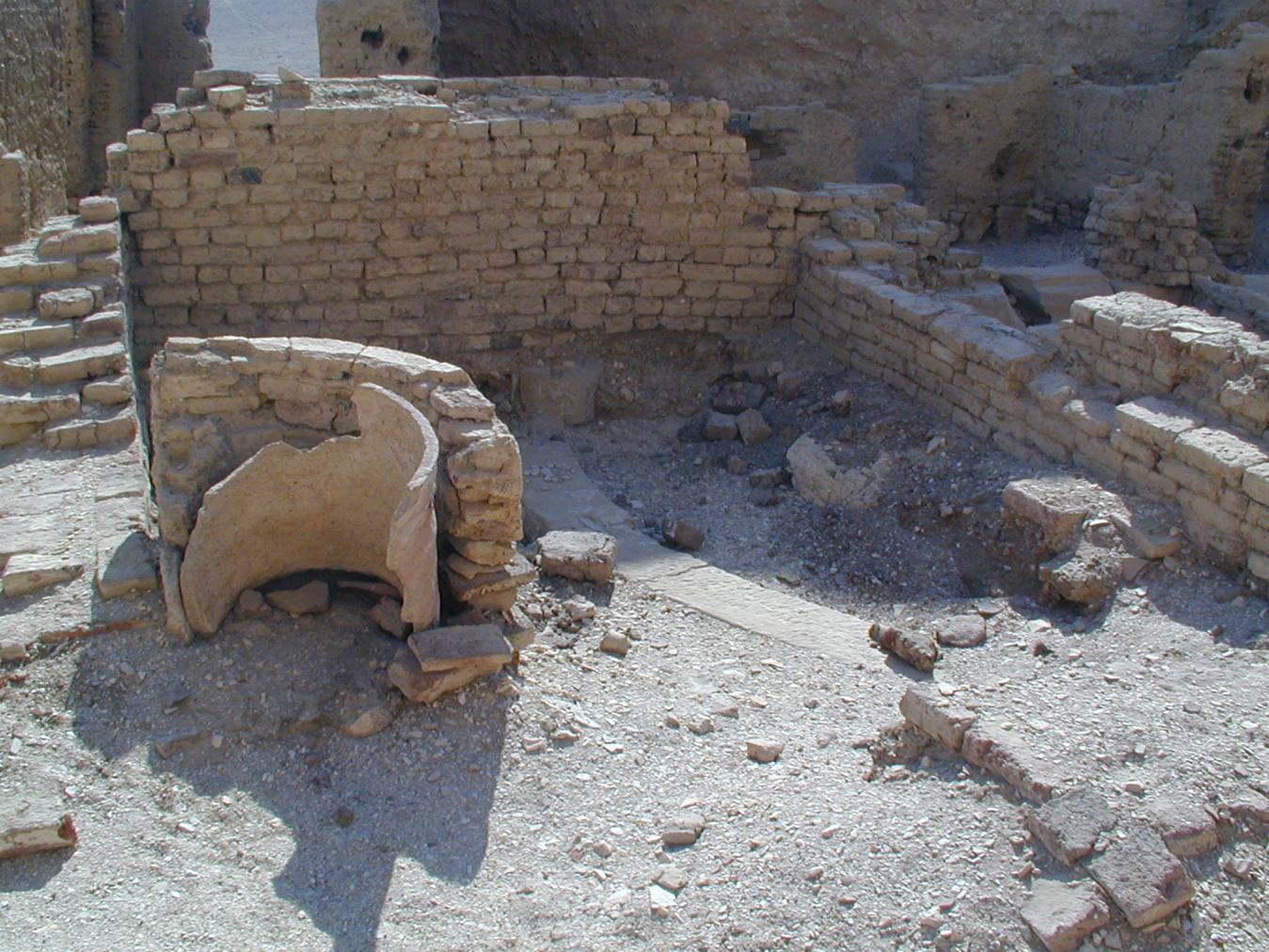
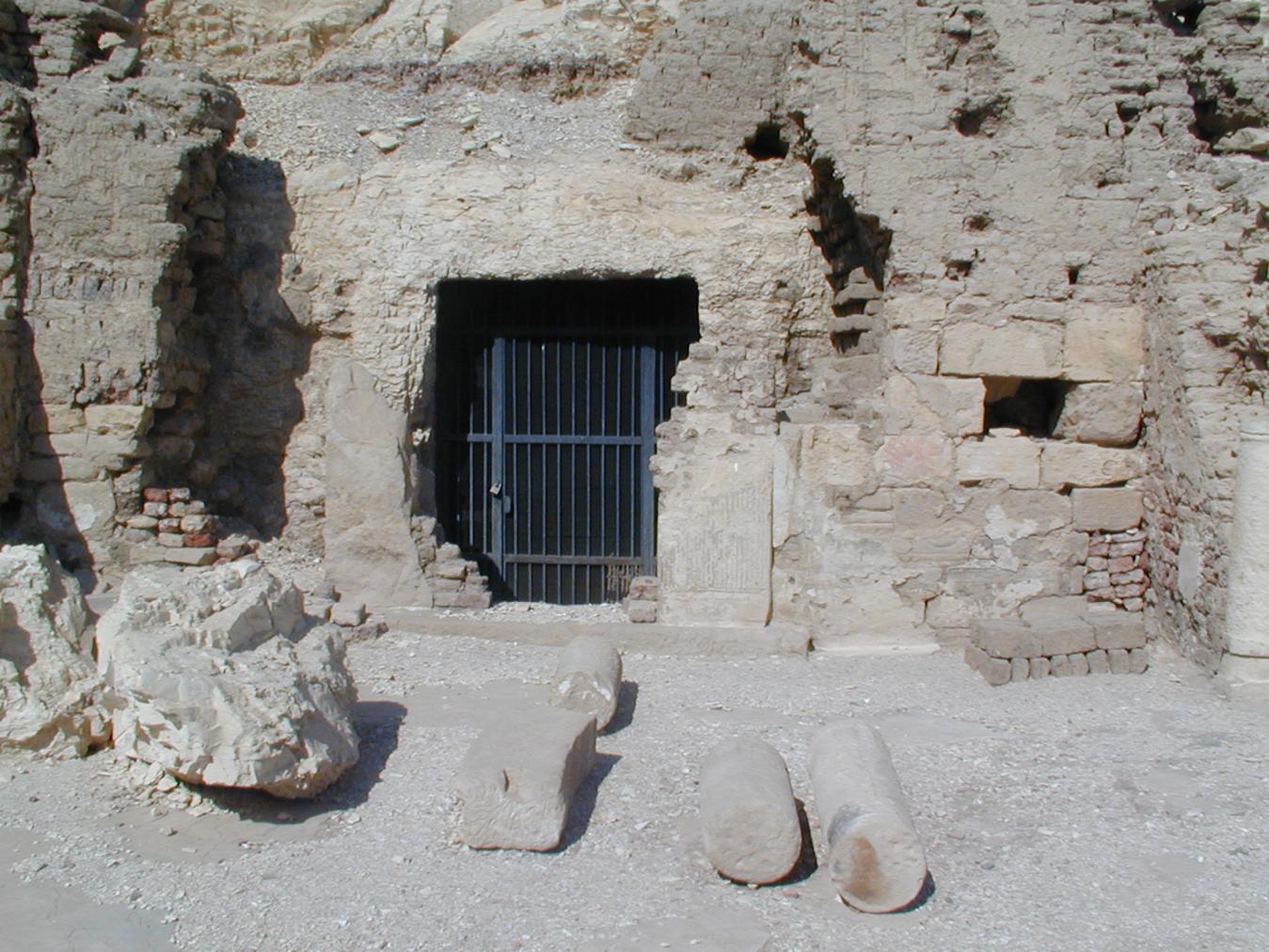
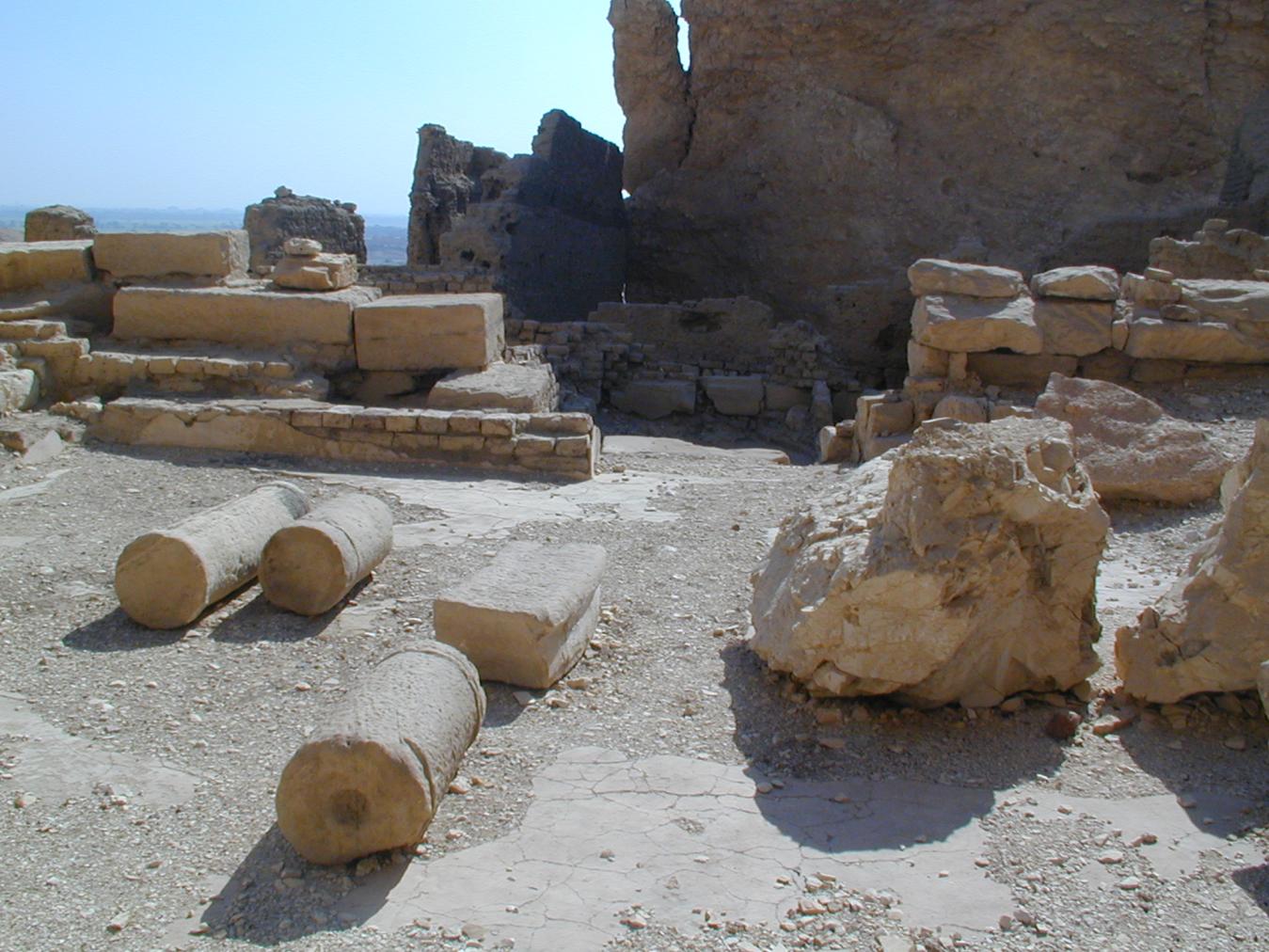
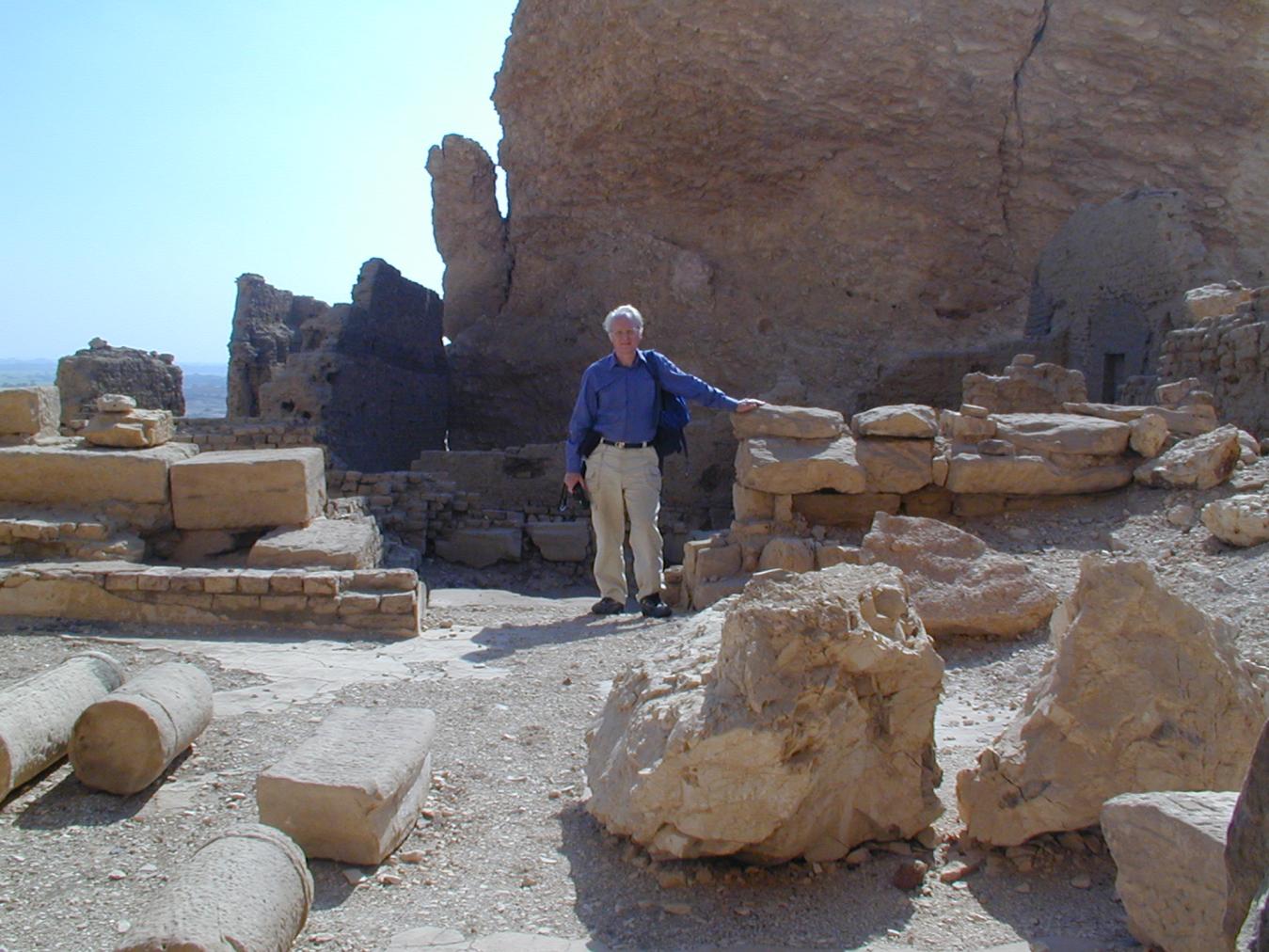
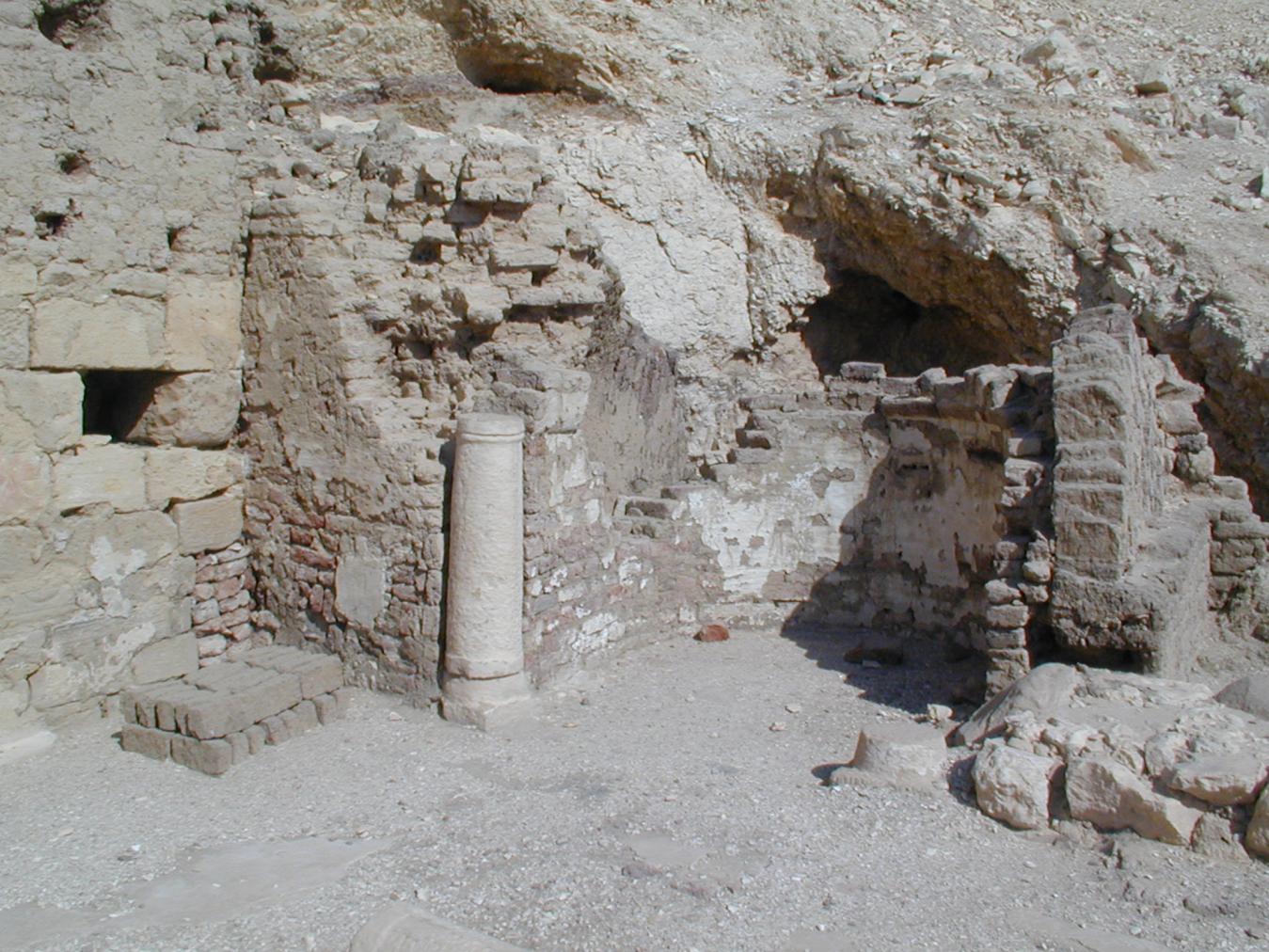
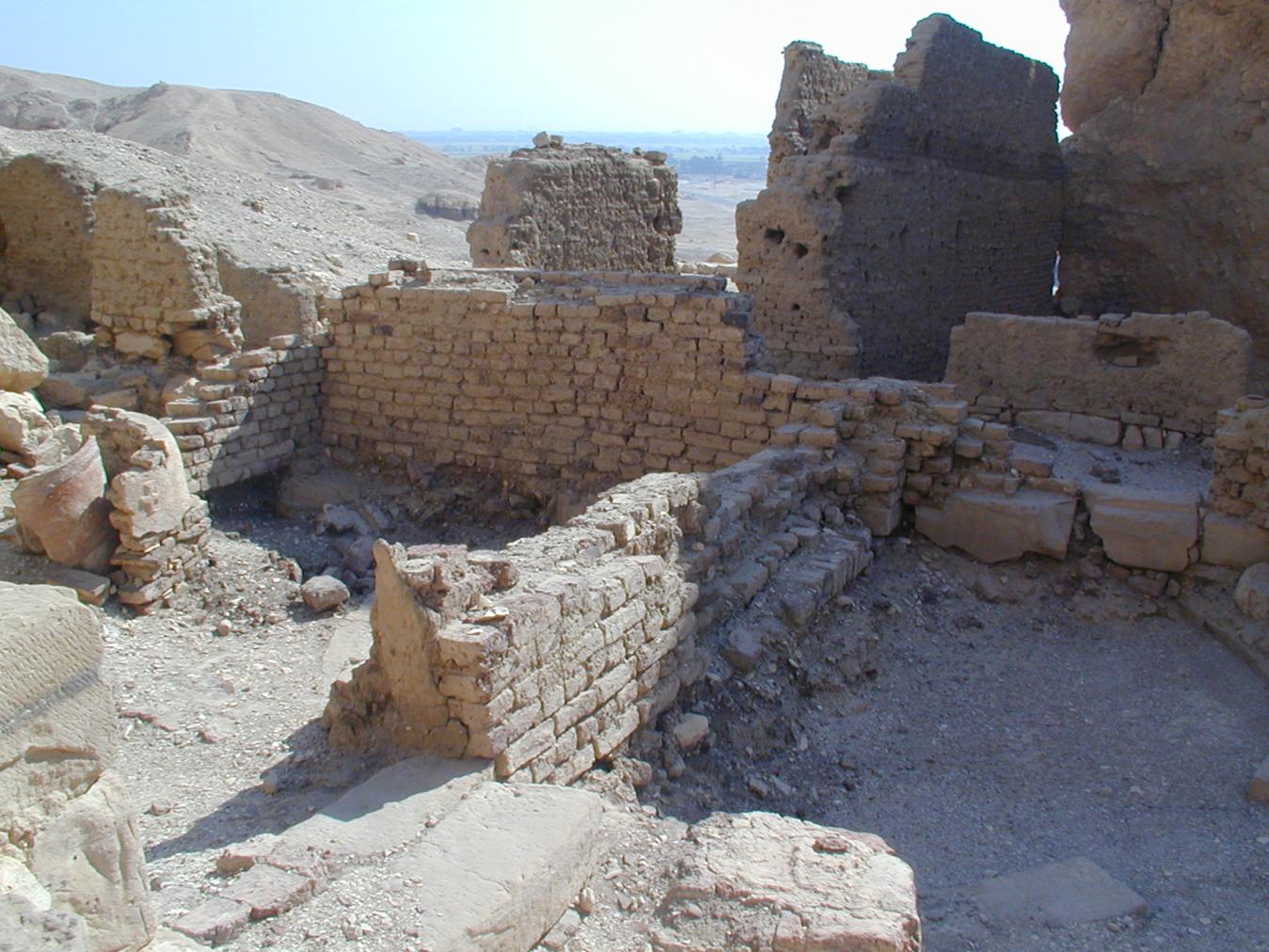
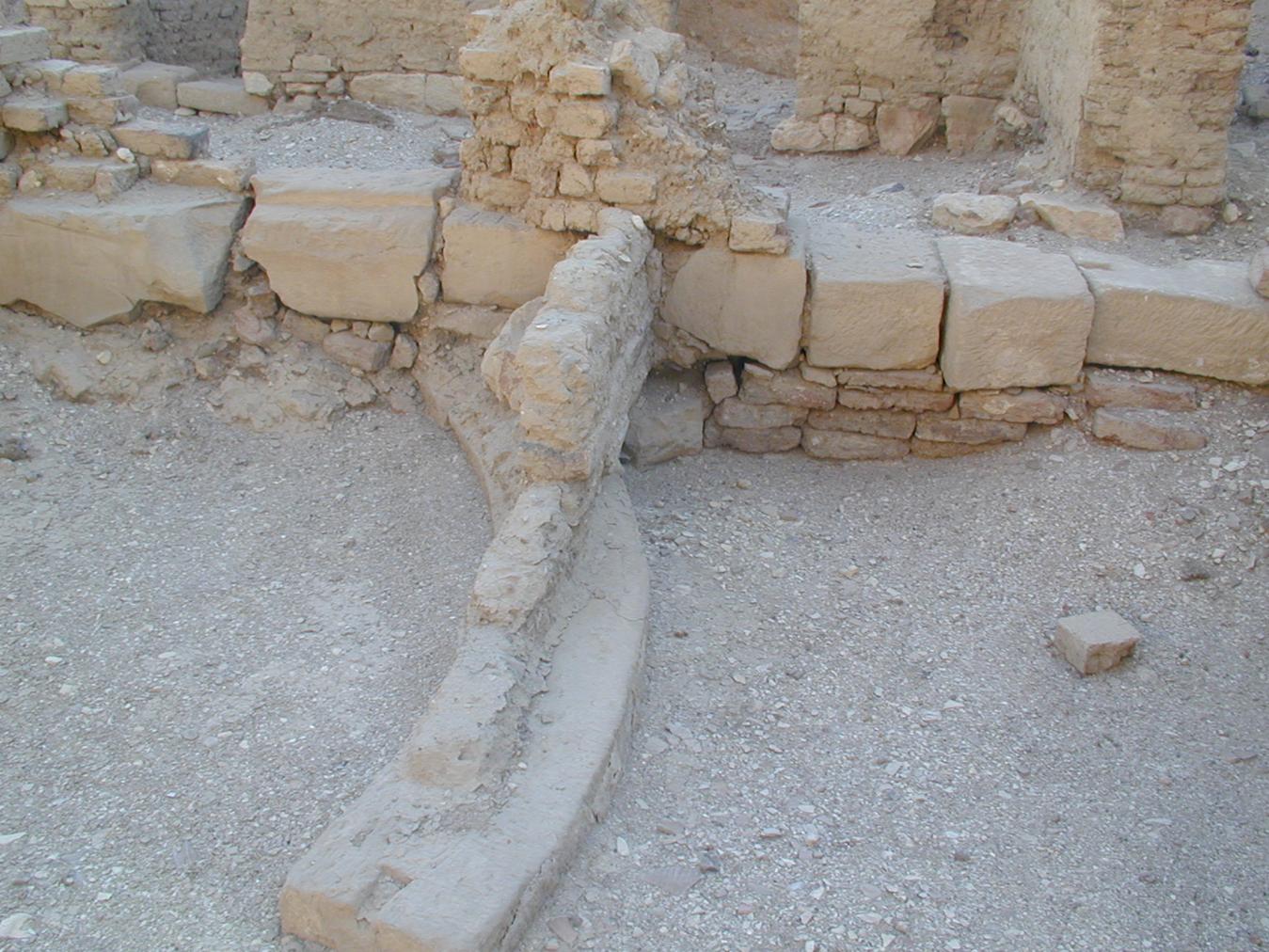
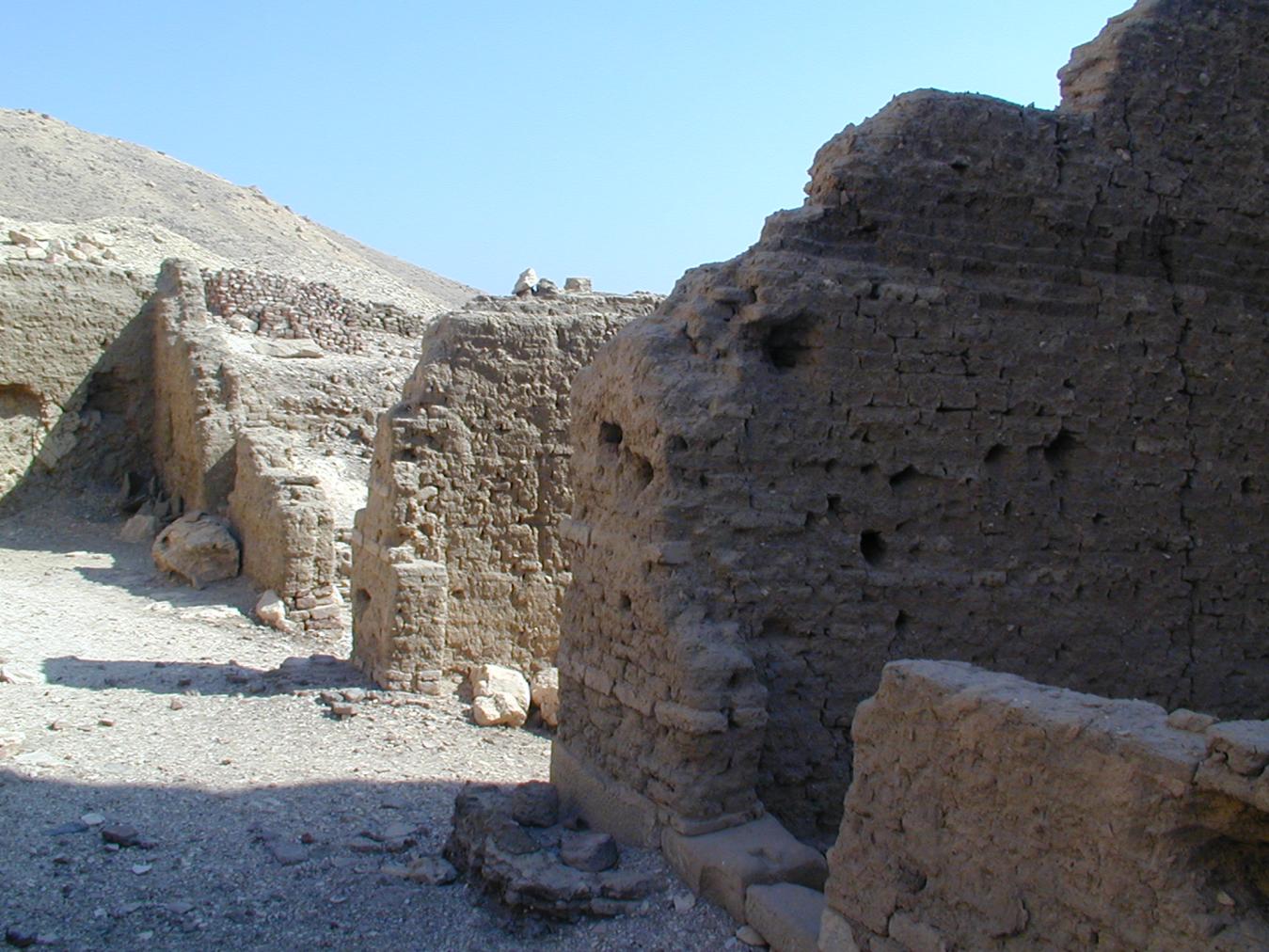
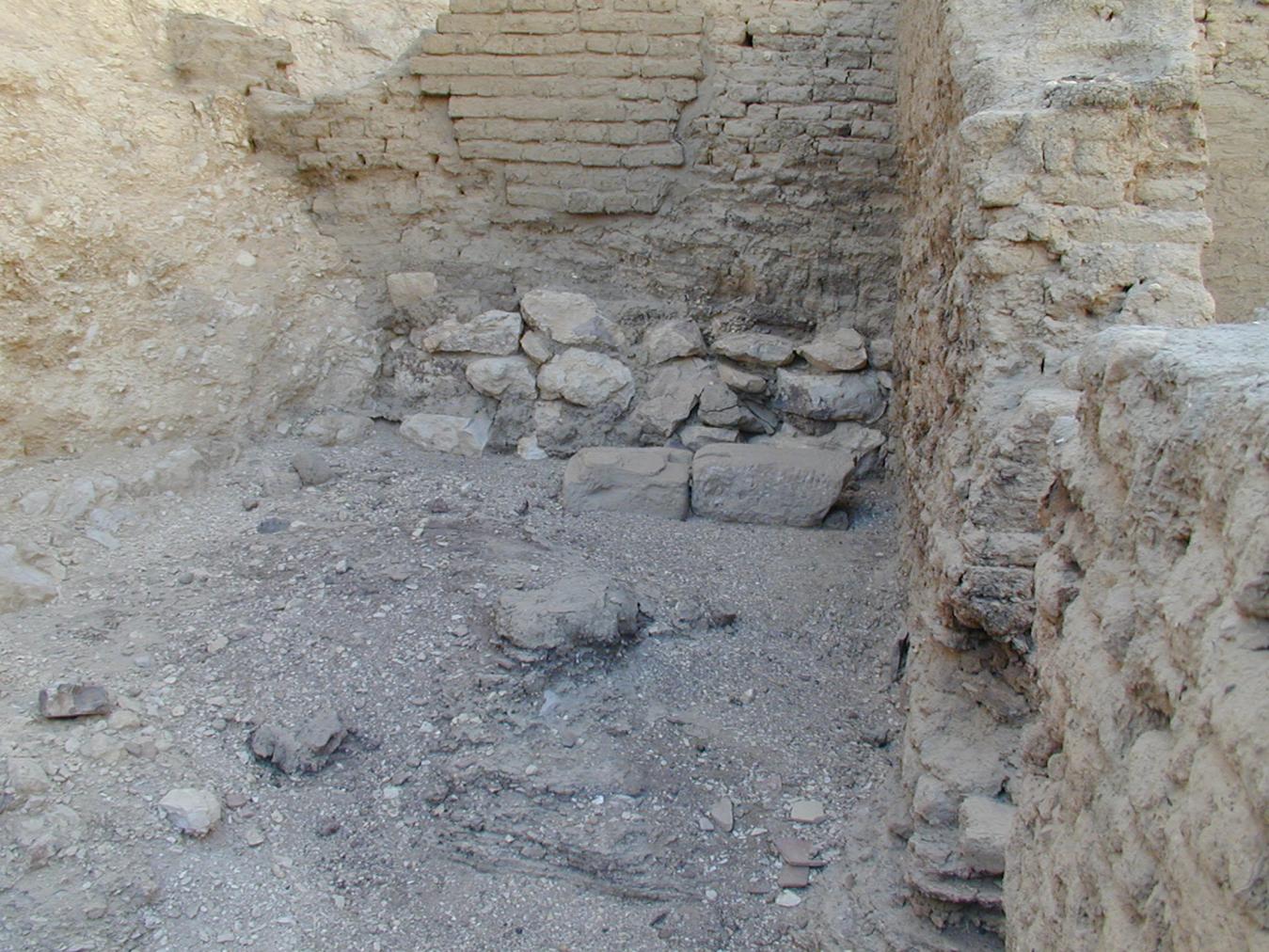
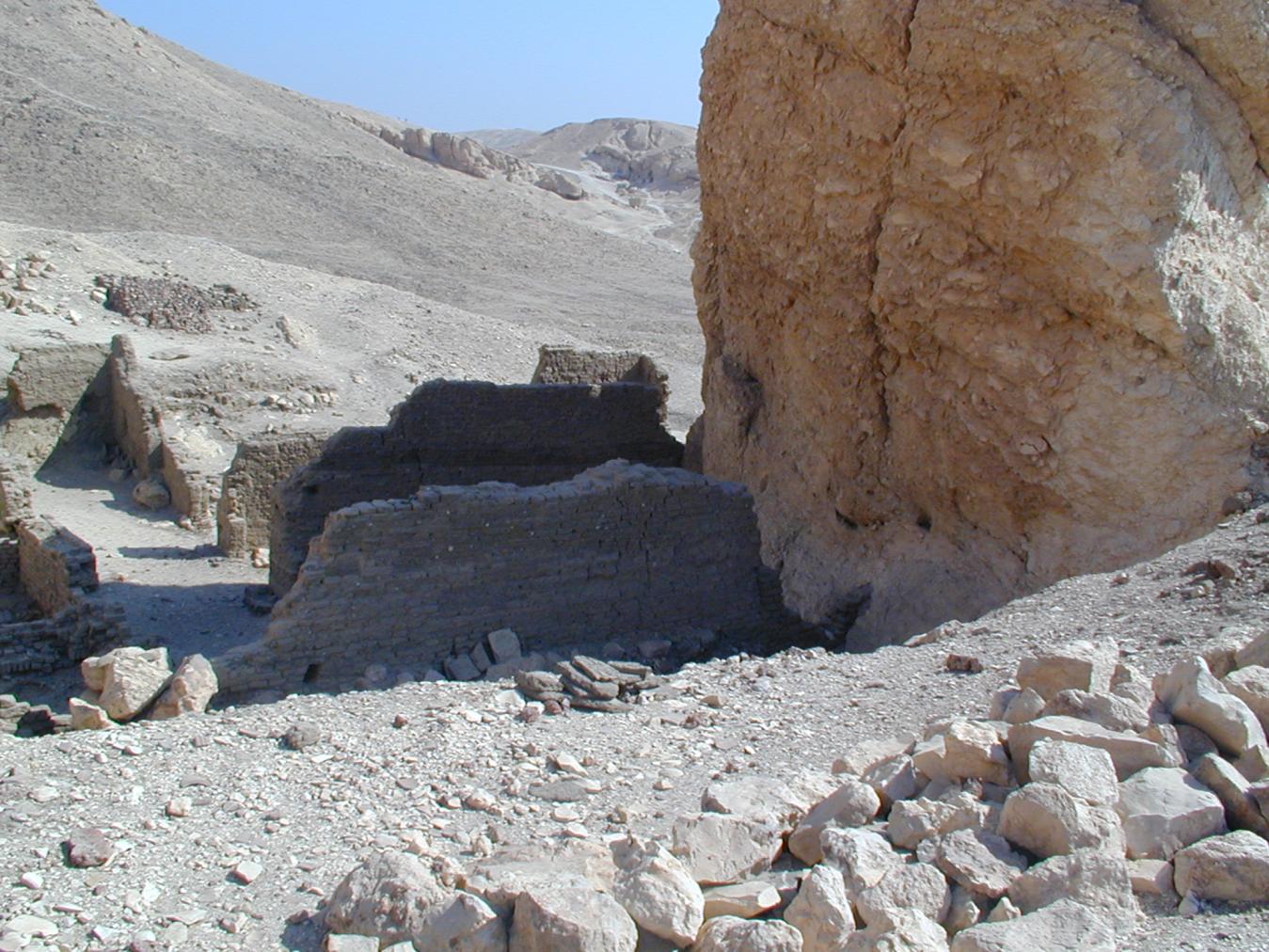
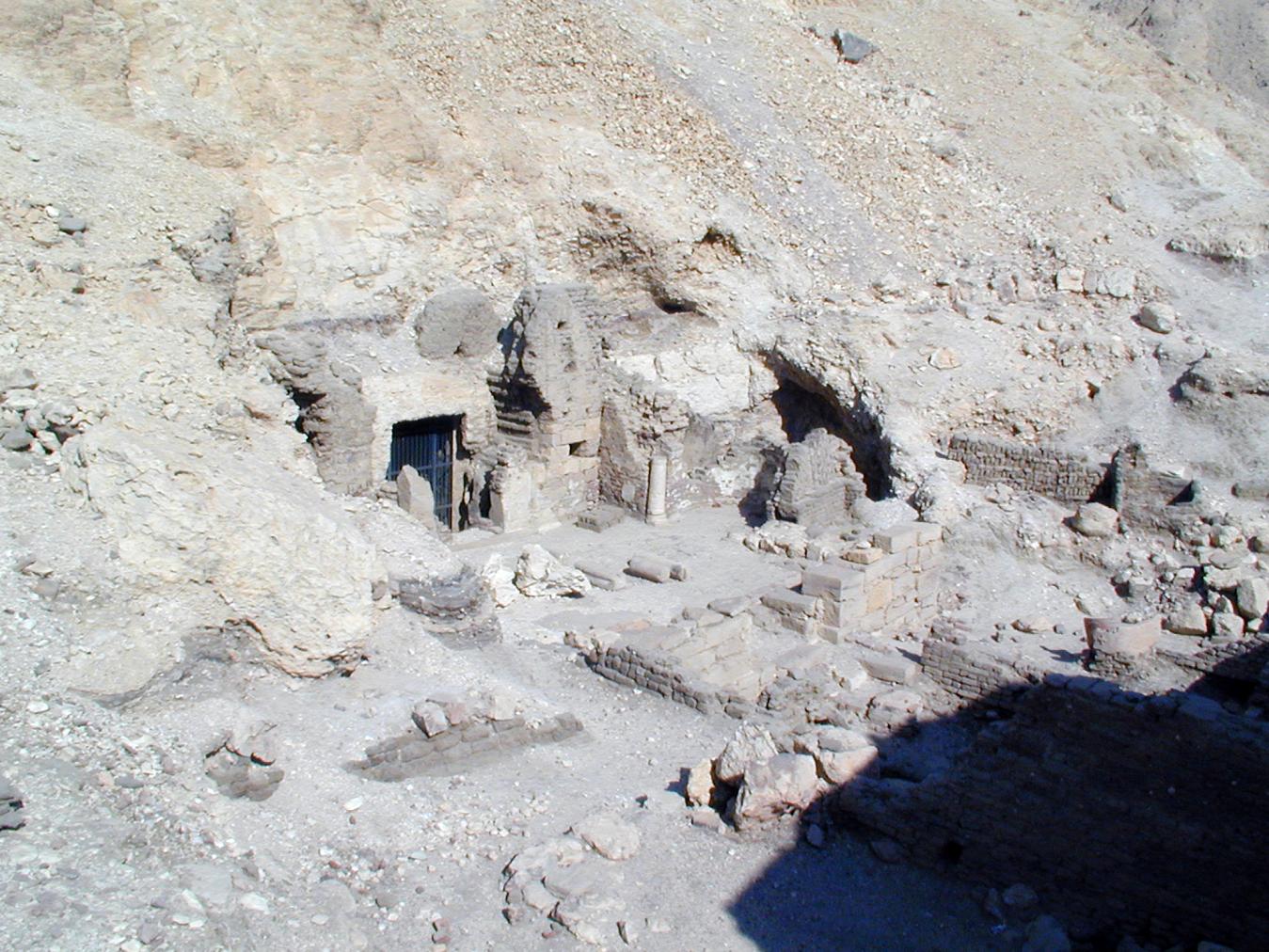
Articles
Tomb Numbering Systems in the Valley of the Queens and the Western Wadis
Geography and Geology of the Valley of the Queens and Western Wadis
Bibliography
Demas, Martha and Neville Agnew (eds). Valley of the Queens. Assessment Report. Los Angeles: The Getty Conservation Institute, 2012, 2016. Two vols.
Derchain, Phillippe. Une porte d'Antonin le Pieux et l'Osiris d'Erment à Médinet Habou. Chronique d'Égypte: bulletin périodique de la Fondation égyptologique reine Élisabeth 34, 67 (1959): 21-33.
Lecuyot, Guy, and Marc Gabolde. A mysterious DwA dating from Roman times at the Deir er-Rumi. In: Christopher Eyre (ed.), Proceedings of the Seventh International Congress of Egyptologists, Cambridge, 3-9 September 1995, Orientalia Lovaniensia Analecta, no. 82. Leuven, Belgium: Uitgeverij Peeters, 1998: 661-66.
Schiaparelli, Ernesto. Realazione sui lavon della Missione archeologica italiana in Egitto, anni 1903-1020: la tomba intatta dell’architetto Cha: nella necropoli di Tebe. Vol. 2. Turin: Casa editrice Giovanni Chiantore, 1927.
Thomas, Elizabeth. The Royal Necropoleis of Thebes. Princeton: privately printed, 1966.
Winlock, Herbert E., W.E. Crum, and Hugh G. Evelyn-White. The Monastery of Epiphanius at Thebes. Vol. 1. Publications of The Metropolitan Museum of Art Egyptian Expedition, 3/4. New York: Arno Press, 1926.

